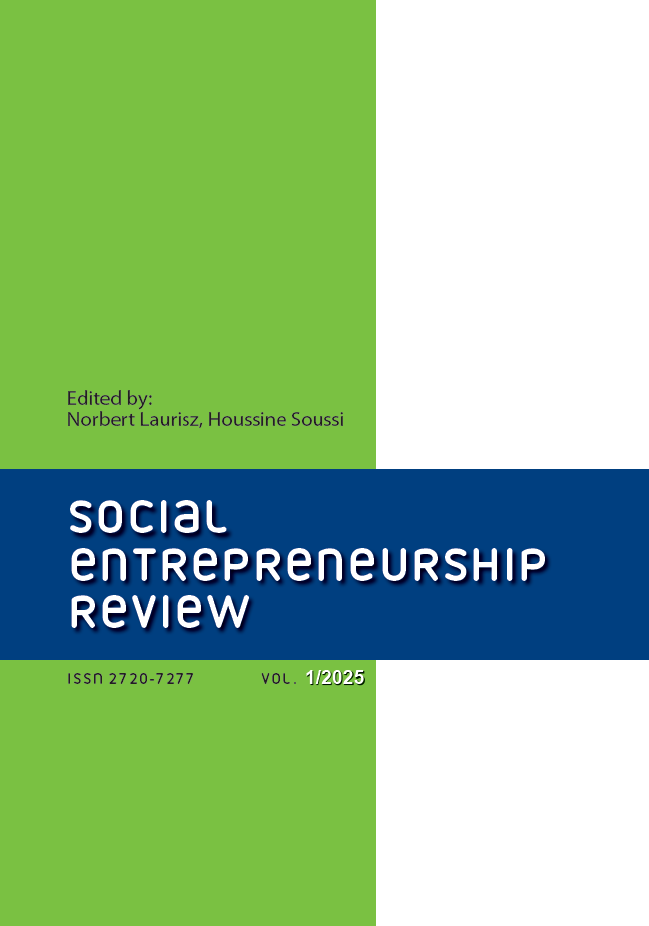City lab as a way to implement social innovation in urban areas
DOI:
https://doi.org/10.15678/ES.2018.2.12Keywords:
city lab, living lab, social innovationAbstract
This article attempts to combine two issues: present for some time in the scientific discussion concept of social innovation with a topic that appeared relatively recently – city lab. The aim of the considerations is to show the essence of city lab in the context of implementing social innovations. For its implementation, the author made an analysis of the relevant literature on the subject. The article starts with a review of understanding of social innovations. Next, the essence of city lab is described, indicating the actors and their functions. Finally, the author points out the relationship between the title concepts. In the presented approach, the city lab is a platform for implementing social innovations. The latter relate to longterm urban development planning, implemented with the participation of various stakeholders, with the dominating role of the city users (residents) as the main innovators and local authorities, watching the reality and legality of the proposed solutions. The presented approach seems to be worth promoting both by representatives of science and public decision-makers.
Downloads
References
Almirall E. (2009). Understanding innovation as a collaborative, co-evolutionary process. Doctoral Thesis. Esade – Escuela superior de administracion y direccion de Emperas.
Benson J.K. (1983). „A Framework for Policy Analysis”, w: D. Rogers, D. Whetten (eds.), Interorganisational Coordination: Theory, Research & Implementation. Iowa: Iowa State University Press.
BEPA (2011). Empowering People, Driving Change. Social Innovation in the European Union. Luxembourg: Publications Office of the European Union.
Carayannis E.G., Campbell D.F.J. (2009). „’Mode 3’ and ‘Quadruple Helix’: toward a 21st century fractal innovation ecosystem”, International Journal of Technology Management, Vol. 46, No 3/4, s. 201–234.
Cosgrave E., Arbuthnot K., Tryfonas T. (2013). „Living Labs, Innovation Districts and Information Market places: A Systems Approach for Smart Cities”, Procedia Computer Science, Vol. 16, pp. 668–677.
Clark J. (2013). Working Regions: Reconnecting Innovation and Production in the Knowledge Economy. London/ New York: Routledge.
Kopyciński P. (2018). City lab as a platform for implementing urban innovation. The role of companies. 5th AIB-CEE Chapter Annual Conference Academy of International Business and Cracow University of Economics Krakow, 13st September.
Leminen S. (2013). „Coordination and Participation in Living Lab Networks”, Technology Innovation Management Review, November, s. 5–14.
Leminen S., Westerlund M. (2017). „Categorization of Innovation Tools in Living Labs”, Technology Innovation Management Review, January, Vol. 7, Iss. 1, s. 15–25.
Moroń D., Klimowicz M. (2015). „Podmioty ekonomii społecznej w procesie zarządzania innowacjami społecznymi, Ekonomia Społeczna, nr 1, s. 21–37, DOI:10.15678/ES.2015.1.02.
Mulgan G. (2012), „Social innovation theories: can theory catch up with practice”, w: H.-W. Franz, J. Hochgerner, J. Howaldt (eds.), Challenge social innovation: potentials for business, social entrepreneurship, welfare and civil society (s. 19–42). Heidelberg/ New York: Springer, Welfare and Civil Society.
Murray R., Caulier-Grice J., Mulgan G. (2010). The Open Book of Social Innovation. UK: NESTA.
Nyström A.G., Leminen S., Westerlund M., Kortelainen M. (2014). „Actor roles and role patterns influencing innovation in living labs”, Industrial Marketing Management, nr 43, s. 483–495.
OECD (2008). Podręcznik Oslo. Paris: OECD&EUROSTAT.
OECD (2011). OECD Guidelines for Multinational Enterprises. Paris: OECD Publishing.
Paskaleva K. (2015). „E-governance as an enabler of the smart city”, w: M. Deakin (ed.), Smart cities. Governing, modelling and analising the transition. Oxfordshire: Routledge.
Perjo L., Fredricsson Ch., Costa S.O. (2016). Public-Private-People Partnership in Urban Planning. Baltic Urban City Lab.
Portal Magiczny Kraków, http://krakow.pl (dostęp: 15.12.2018).
Scholl Ch., Kemp R. (2016). „City Labs as Vehicles for Innovation in Urban Planning Processes”, Urban Planning, Vol. 1, Iss. 4, s. 89–102.
Schumpeter J. (1960). Teorie rozwoju gospodarczego. Warszawa: PWN.
The Young Foundation (2012). Social Innovation Overview. A deliverable of the project: „The theoretical, empirical and policy foundations for building social innovation in Europe (TEPSIE)”, European Commission – 7th Framework Programme. Brussels: European Commission, DG Research.
Urb@exp Project, http://www.urbanexp.eu (dostęp: 15.08.2017).
Voytenko Y., McCormick K., Evans J., Schwila G. (2016). „Urban living labs for sustainability and low carbon cities in Europe: Towards a research agenda”, Journal of Cleaner Production, vol. 123, s. 45–54.
Wiktorska-Święcicka A., Moroń D., Klimowicz M. (2015). Zarządzanie innowacjami społecznymi. Difin: Warszawa.
www.socialinnovation2011.eu (dostęp: 13.12.2012).
World Bank & European Network of Living Labs (2014). Citizen-Driven Innovation: A Guidebook for City Mayors and Public Administrators. Brussels: World Bank & European Network of Living Labs.






